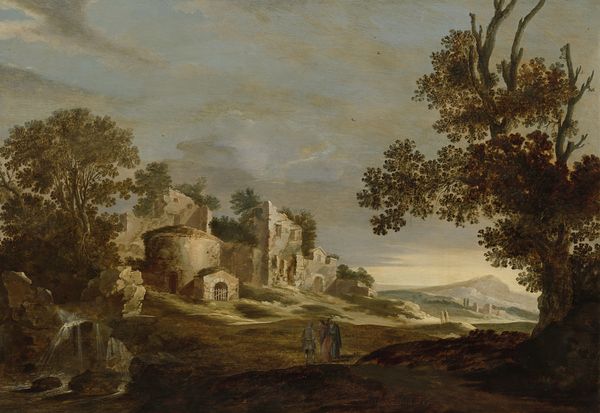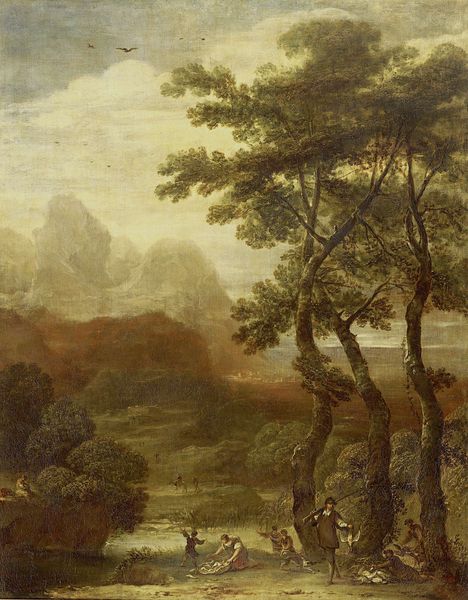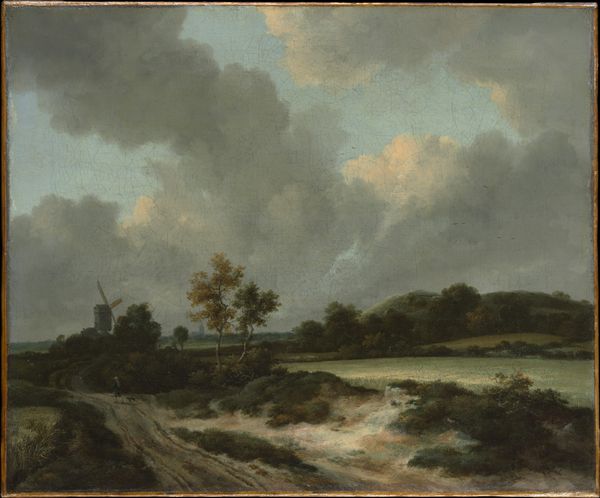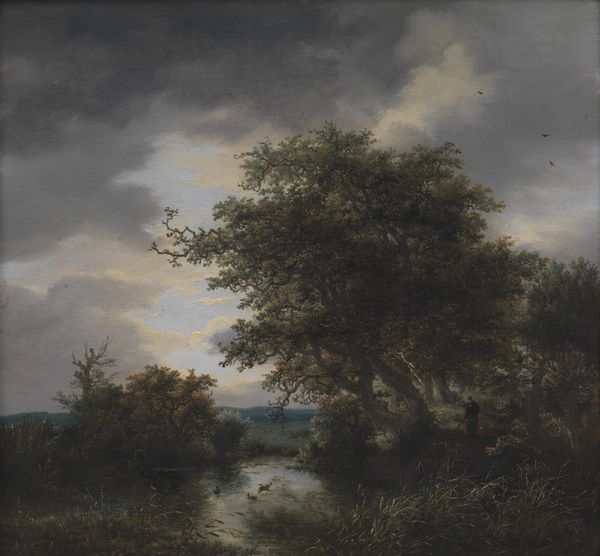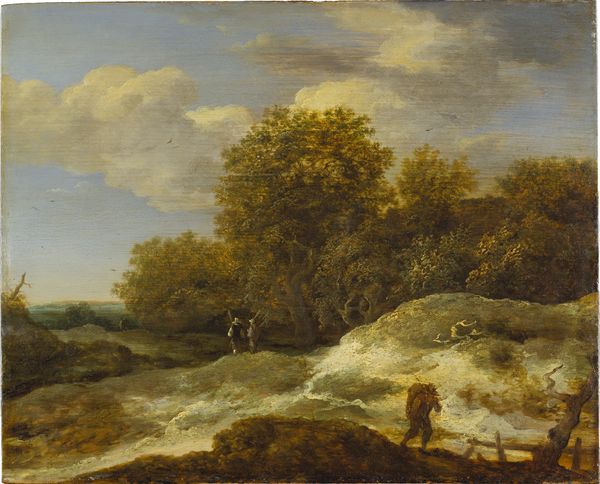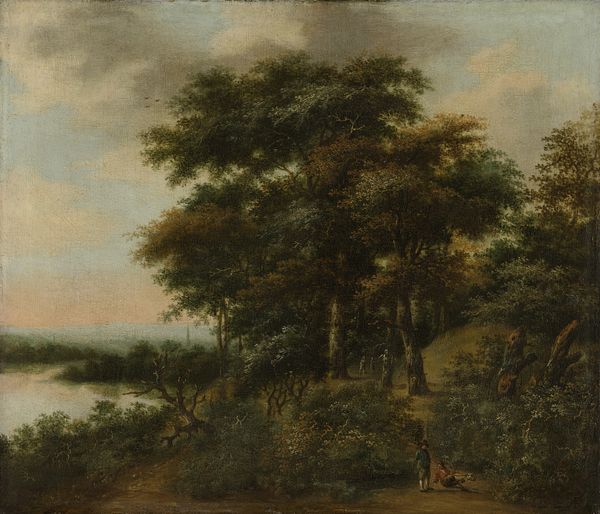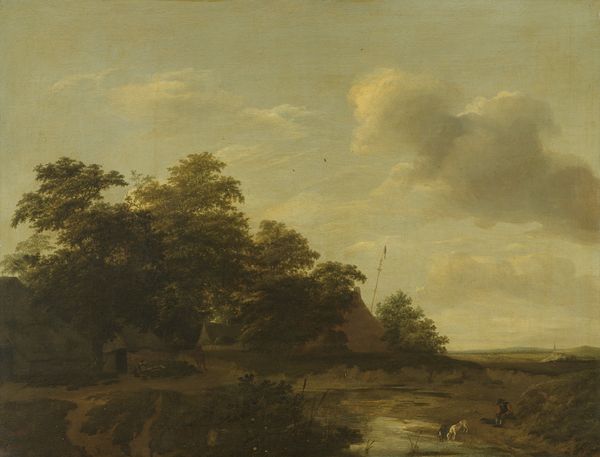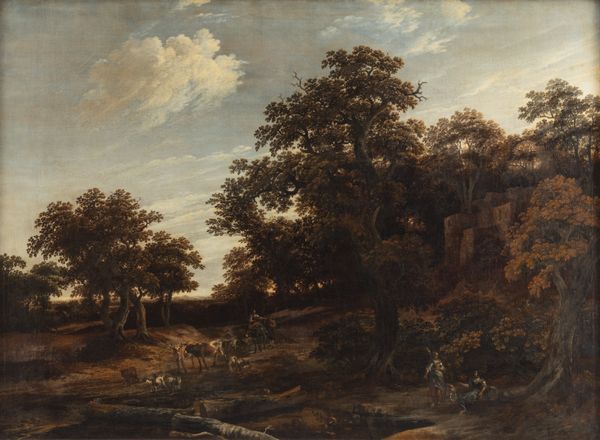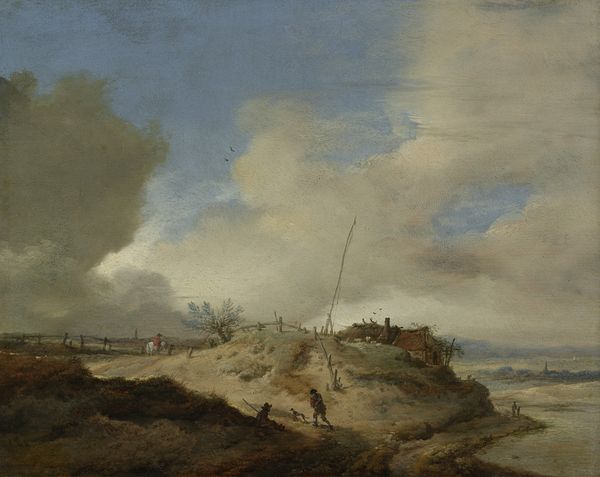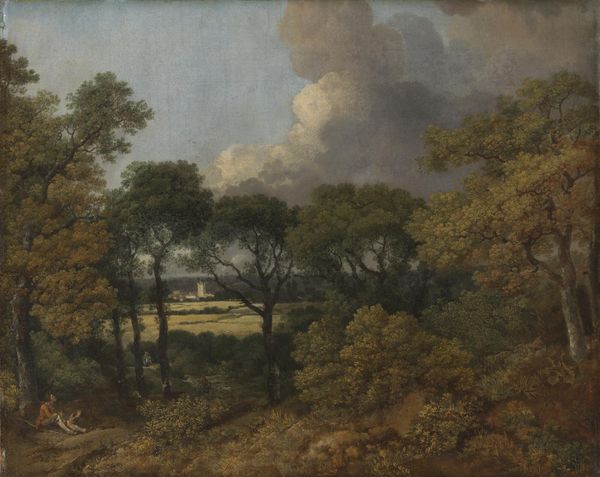
Mountain Scenery with a View of a River and the Sea 1634 - 1734
0:00
0:00
painting, oil-paint
#
baroque
#
painting
#
oil-paint
#
landscape
#
oil painting
#
watercolor
Dimensions: 21 cm (height) x 35 cm (width) (Netto)
Curator: This painting is titled "Mountain Scenery with a View of a River and the Sea." It's an oil painting currently held at the SMK, Statens Museum for Kunst. While attributed to Jacob van Geel, its exact date remains a bit of a mystery, estimated sometime between 1634 and 1734. Editor: My initial impression is the texture. I see such a pronounced manipulation of paint. Look how the artist builds up the rocks and the foliage, almost sculpturally. You can almost feel the grain of the landscape under your fingertips. Curator: Yes, the baroque era emphasis on dramatic lighting and textures comes through powerfully. I think it's interesting to consider how landscapes like this served an emerging sense of national identity. They idealized the land, often with underlying social messaging embedded in the idealized imagery. Editor: It does evoke a certain reverence, doesn't it? But I'm also intrigued by what the artist chose to omit. The landscape appears almost uninhabited. Did Van Geel intend to show the untamed face of nature, devoid of human impact? Or were people deliberately left out? I am curious about the kinds of brushes he might have been using, and where would they have been sourced at this time. Were they hog bristle or badger hair? What impact would this have had on the application of oil? Curator: I think your question strikes right at the center of how landscape painting has historically functioned within societal power structures. These idealized views of the countryside often served to erase the presence of the working classes who toiled on the land. It reinforces the control over land ownership within societal elites. Editor: Fascinating. It prompts me to consider where exactly the artist sourced his pigments. Was it a local production, importing expensive blues, for example? We should look at it more in relation to the Dutch trade at the time. Curator: A painting like this encourages a layered interpretation, really highlighting how art interacts with social and political climates. Editor: Absolutely. And how its very material construction and dissemination reflects and influences those structures.
Comments
No comments
Be the first to comment and join the conversation on the ultimate creative platform.
